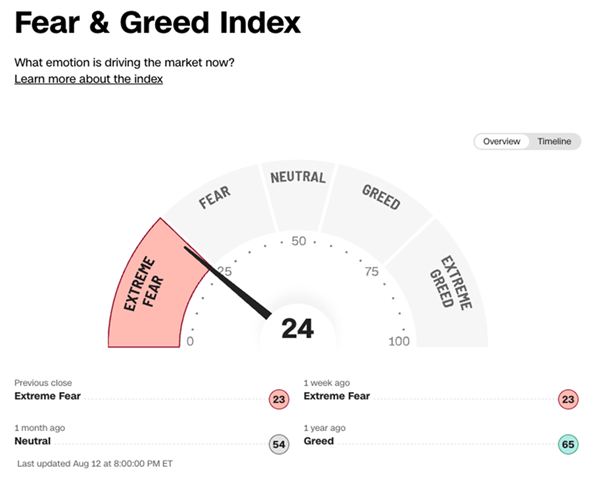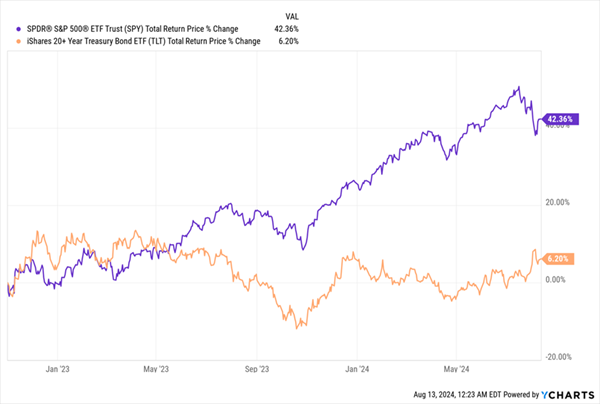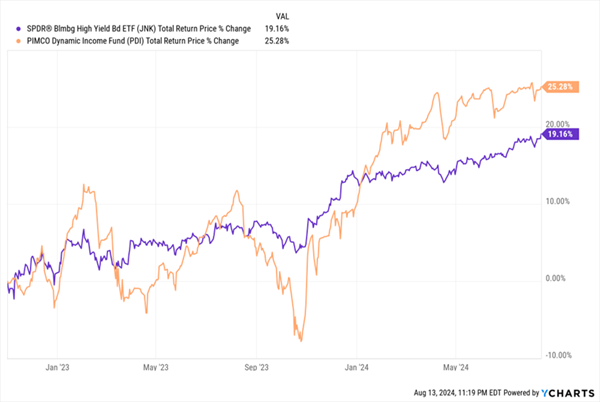Stock market predictions, of course, are just that—predictions. All of them (including mine!) should be taken with a grain of salt.
I normally prefer to avoid making them. But every now and then I partake because, well, the prediction game is fun! And we do need some kind of forecast to work from when it comes to buying stocks—and our favorite income plays: 8%+ yielding closed-end funds (CEFs).
The key, of course, is knowing when to stick to your forecasts and when to change tack. So as we move past the August 5 correction and toward the final third of 2024, it’s a good time to check in on a couple predictions I made back in January and see how they’re playing out.
Back then, I predicted a recession would “ease into a late-year recession.” But I also forecast a 10% to 15% gain for the S&P 500 in 2024.
Strange as it sounds, we can have both market outperformance and a slowdown. And early signs are that this is how things are playing out. Some data (particularly in the labor market) is pointing to a slowdown, while the market has hit my target window, albeit quite early:
Stocks Race Higher, With a Recession-Wary Dip

This year’s big gains are largely because a recession was already priced in during the 2022 market crash. Which means stocks had to price in the non-recession of last year and this year. That, in turn, drove the bull run you see above.
I still believe a mild recession is on the horizon, especially since the data is pointing to a downturn. That’s put the stock market more on edge than it’s been since 2022 (with the possible exception of the March 2023 collapse of Silicon Valley Bank). CNN’s handy Fear & Greed index has picked up on this latest wave of skittishness:

Source: CNN.com
Yet fearful moments like these are almost always great buying opportunities. To take a more extreme example, anyone who bought when the market was fearful back in 2022, for example, did great:
“Fearful” 2022 Was a Wonderful Time to Buy

This gain is the result of the fact that over the long term, stocks keep going up. Which is why it never makes sense to sell your stocks (or CEFs) and go into cash; inflation means every dollar you’d have gotten by selling stocks in 2022 is now worth just 94 cents.
US Treasuries (in orange above) aren’t a great option, either. See how they’re up 6.2% over a period when inflation went up 5.6%? Sure, that would’ve avoided losses, but it didn’t make money.
However, there is another asset that gives us high income and preserves our capital, setting us up with a nice hedge to stock-market volatility: corporate bonds.
The 6.6%-yielding SPDR Bloomberg High Yield Bond ETF (JNK), the benchmark for the asset class (in purple below), delivered three times the return of long-term Treasuries over the same period. The PIMCO Dynamic Income Fund (PDI), an actively managed CEF that also focuses on corporate bonds (in orange), returned even more:
Corporate Bonds Add “Ballast” and Income to Stock Holdings

What’s more. PDI yields an outsized 14.1%! That’s 10 times the yield on the typical S&P 500 stock.
Corporate Bonds Deliver Stock-Like Gains in 2024

There are two main reasons why PDI’s NAV is rising:
- Corporate bonds yield a lot, and default rates are sticking around 1% overall. That’s very low, and a diversified bond fund will keep paying out interest, which is high since the Fed raised rates.
- Speaking of the Fed, the central bank now plans to cut rates. That raises the value of already-issued corporate bonds, including those in PDI’s $5.4 billion in assets.
Both of these make PDI a good buy if you’re worried about stocks going through another sharp pullback. That’s a reasonable concern that may linger until later this year, when we get more clarity (not just predictions) on where America’s economy is going.
With PDI, you’ll get $1,175 per month for every $100k you put in, and it works well to temper the volatility of your overall portfolio, too.
We, of course, have long known the value of holding corporate-bond CEFs at my CEF Insider service. Right now, we hold eight different funds focusing on corporate debt, yielding a high 9.4% between them.
The media and Wall Street are finally catching on, with Bloomberg acknowledging in a recent article that it’s a good idea to buy more bonds to hedge against a stock-market crash. I’m glad the pros are finally coming around to that view.
Use This Dip to Buy My Top AI (Yes, AI!) Dividends at a Rare “Double Discount”
This latest market pullback has put my 4 favorite AI-powered dividends (current average yield: 8.4%) on sale, not once but twice over!
The first discount comes courtesy of the August 5 pullback, which cut these income plays’ market prices.
The second? Unlike PDI, all 4 of these funds trade at discounts to NAV. It’s another way of saying their market prices are below what their holdings are actually worth.
That will change fast as the economic picture gets clearer and more investors come around to our view: That AI is yet another tool that will lead to a more productive economy over time—without upending corporate profits or costing jobs.
The time to buy these ridiculously cheap high yielders is now. Click here to get our full take on AI, including where we see the tech going from here. You’ll also get to download a free Special Report naming all 4 of these “double discounted” 8.4%-paying funds.
